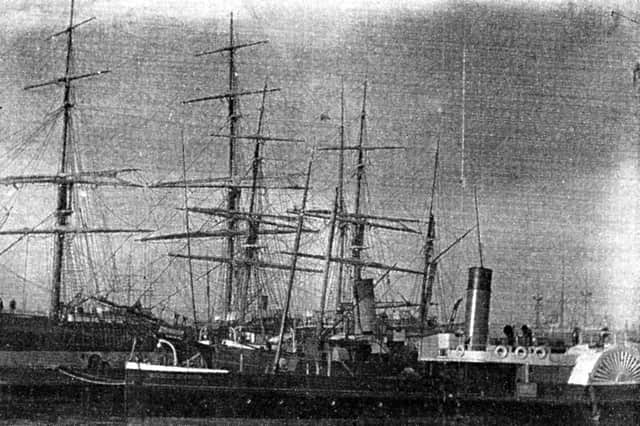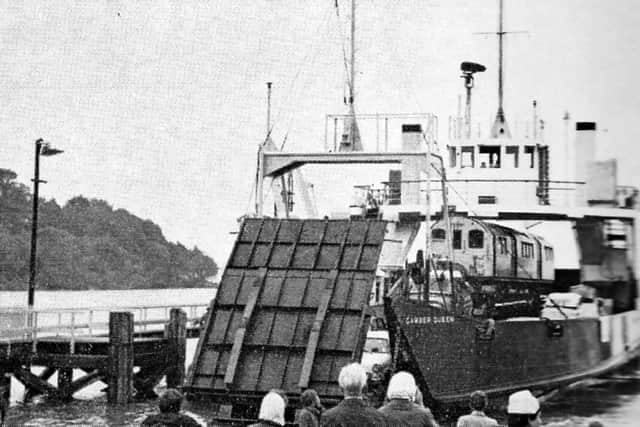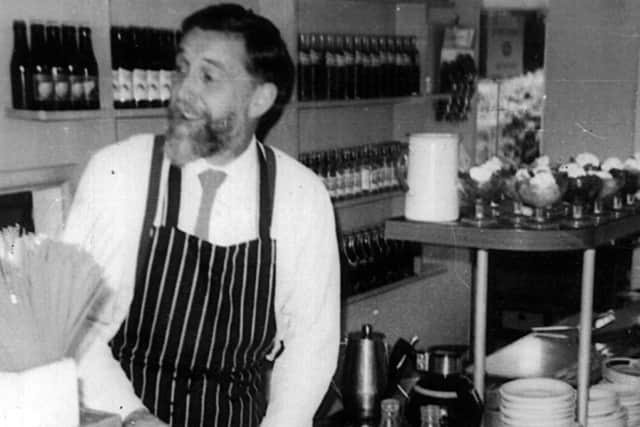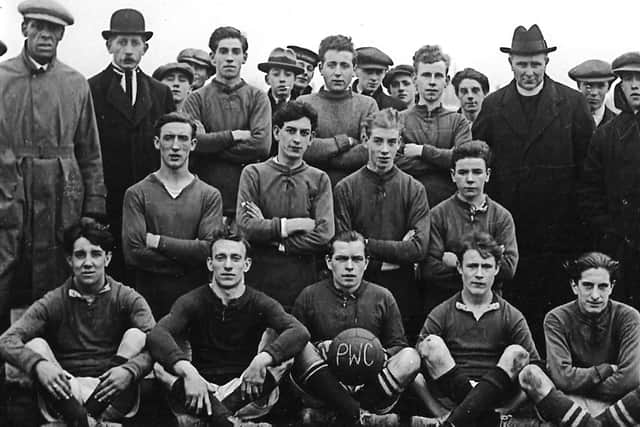A meeting of two maritime eras in bustling Portsmouth Harbour '“ Nostalgia


For we see sailing vessels, in this case a fully-rigged ship to the rear, and a barque this side of her with masts leaning.
The only time we see sailing vessels of that nature these days is if the are arriving on a special occasion or during international sailing ship galas. I am still amazed that they are in the photograph at all.
Advertisement
Hide AdAdvertisement
Hide AdThey are moored in Portsmouth with Isle of Wight paddle steamers and in this case the nearest to camera is  PS Albert Edward. Behind her is PS Heather Bell.


The steamer belonged to a company with a rather long name '“Â The Port of Portsmouth and Ryde United Steam Packet Company Limited.
The company came into being on January 1, 1852, and had five vessels to begin with and provided 11Â services on weekdays between the two ports, eight of which also called at Gosport.
The company remained in business until March 31, 1880 when it was acquired by the L&SW Railway and the LB&SC Railway for the princely sum of  £38,000.Â
Advertisement
Hide AdAdvertisement
Hide Ad'¢Â In December 1966 the steam-hauled train service in the Isle of Wight came to an end and the line, already electrified, was replaced with former London underground trains.


The trains came from London and were placed on to low loaders, I believe at Fratton yard, and then taken to the Isle of Wight car ferry for transporting to the island. At Fishbourne the stock was taken by road to Ryde St Johns Road where they were placed back on tracks. They have been running ever since with few problems and easy maintenance.
'¢Â  A fortnight ago I published a photograph of Charles Snook's premises in Oyster Street, Old Portsmouth. He was an eggs and butter importer.
Mr Snook's great grandson Peter sent me this photograph of his father, also Peter who was born in 1916. Like all sons who were brought up in a business he had to do his bit and Peter Jnr told me his father used to make deliveries in a horse and cart as far out as Wickham.Â
Advertisement
Hide AdAdvertisement
Hide AdIn later life Peter Jnr  worked in the Anchor café on Southsea Common and this is where we see him in the 1970s.


'¢Â An MS Garlick sent me the picture of the football team asking if anyone recognises the PWC on the ball? Portsmouth Water Company perhaps? With a member of the clergy in the picture it may be a church team.  I'd also welcome some names should anyone be able to recognise faces.